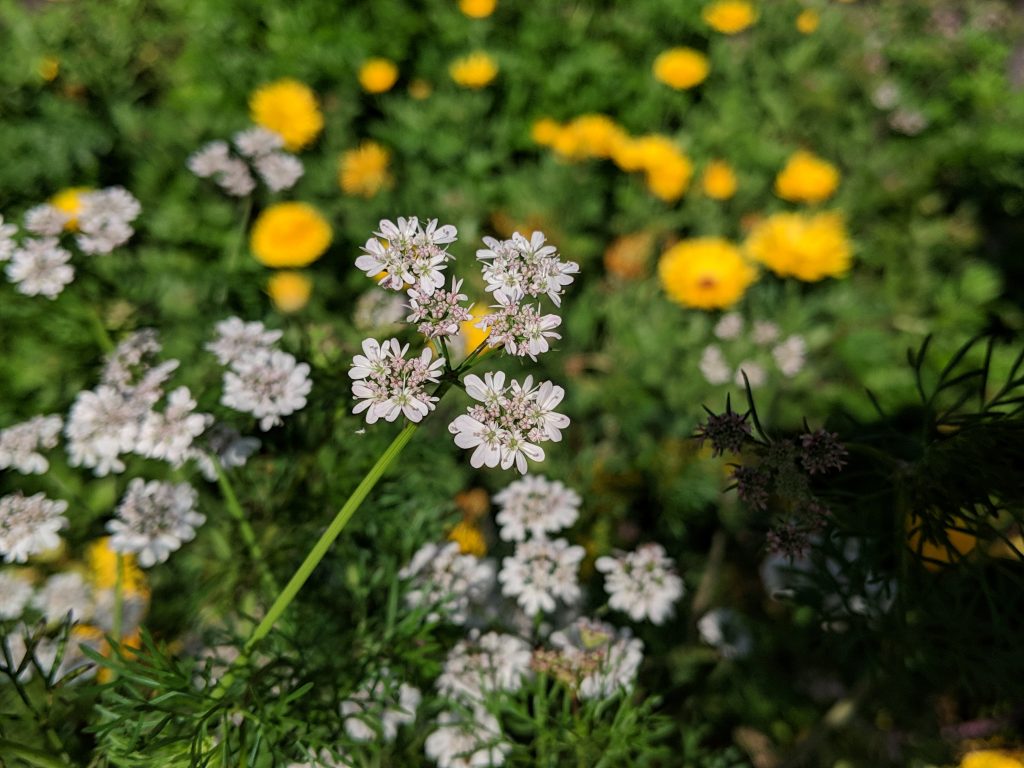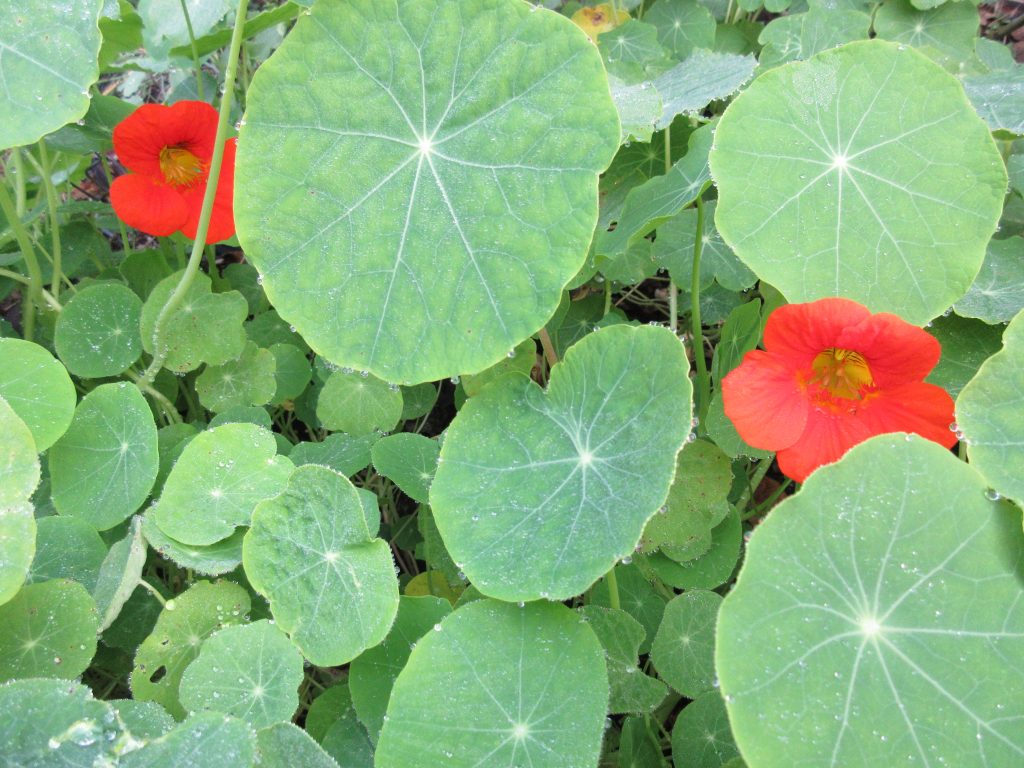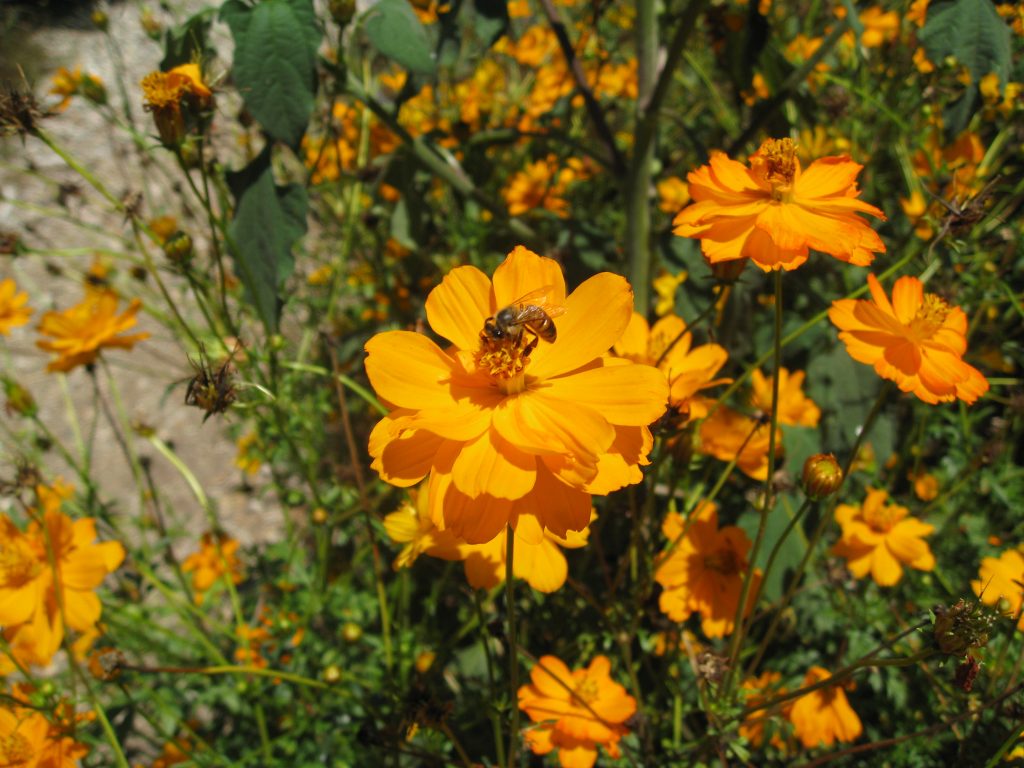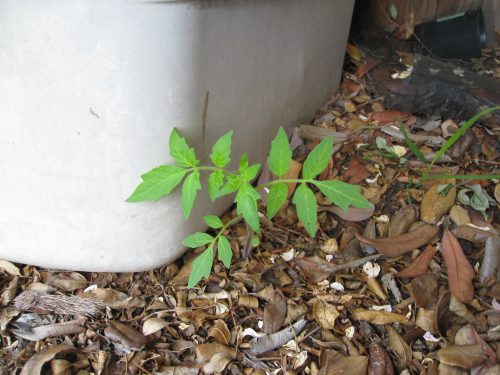Our latest YouTube video gives you the what, how, and why you should grow beneficial insectaries, that is, plants that attract beneficial insects to the garden. Get a behind the scenes look at Gardenerd HQ and all the crazy flowers going gangbusters right now.
Every year we spy good bugs like ladybugs, lacewings, parasitic wasps and more come to our garden in search of habitat plants like the kinds listed below. Even if you don’t have a lot of space, you can grow some of these plants to improve your garden ecosystem.
Beneficial Insectaries – Nature’s Pest Control
Watch the video on YouTube here. Or click below.
What beneficial insectaries to grow?
In the video, you’ll find images of the following:
- California Poppies
- Nasturtiums
- Calendula
- Phacelia
- Nigella – Love-in-a-Mist
- Borage
- Umbel flowers – parsley, cilantro, dill, fennel, celery, alyssum, yarrow and more.

Start with Natives
Contact your local native plant society to find out which natives attract bees and other pollinators in your area. Then add these plants to keep pests at bay. Together they’ll work to balance good bugs with bad bugs and you won’t need bug spray.

Resources
Find more information about beneficial insectaries in this Gardenerd Gazette (scroll down for the list).
Other plants to include can be found here.





Pingback: YouTube: How to Prune California Poppies - Gardenerd
Pingback: Podcast: Thriving with Justin West - DEV Gardenerd - For testing
Pingback: Podcast: Thriving with Justin West - Gardenerd
What specifically will attract ladybugs? And what was the other aphid fighter you mentioned in the video? Is there anything I can grow that will repel ants?
All of the flowers listed in the blog post will attract ladybugs. And the other aphid fighter mentioned was the parasitic wasp, but I also mentioned lacewings. Pirate bugs, hoverflies, and gall midges also eat aphids. All the umbels listed in the blog post will draw them to the garden as well. I don’t know of any plant that specifically repels ants. I usually put out Terro bait ant traps to reduce the population if they are farming aphids in a bed. Otherwise I leave them alone.
Thank you! Awesome information.
Pingback: Podcast: Compact Plants and Beneficial Insects with Jessica Walliser
Great video! Are bluebonnets in this category? I never know when to cut them down. They get wilted and I see the seed pouches, but don’t know the right time to cut to make sure they spread. Would love your advice! 🙂
Bluebonnets are beneficial to bees and butterflies. They are also nitrogen-fixing plants (since they’re in the pea family). Here’s an article on saving Bluebonnet seeds that should help you figure out the timing. https://www.wildflower.org/learn/how-to/grow-bluebonnets